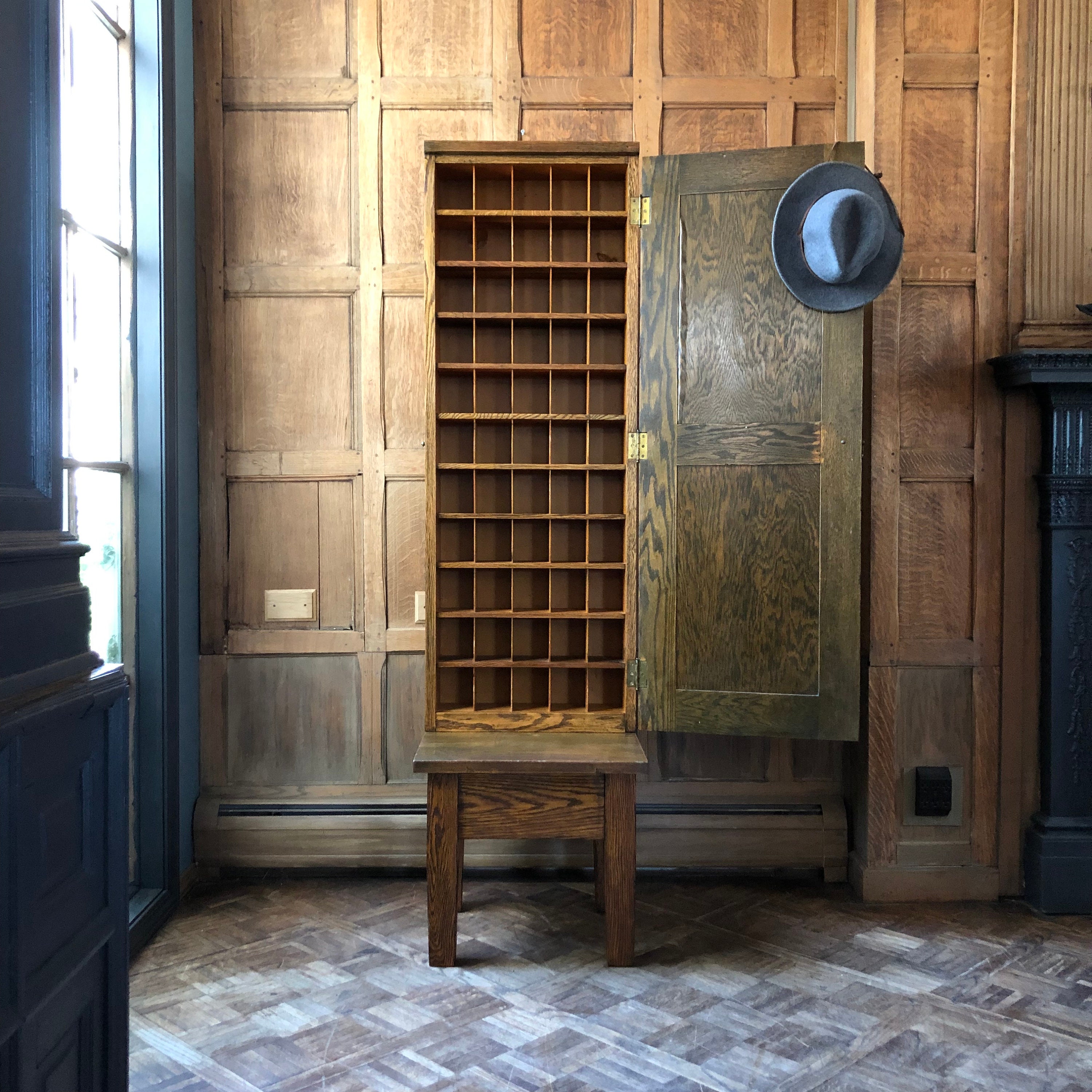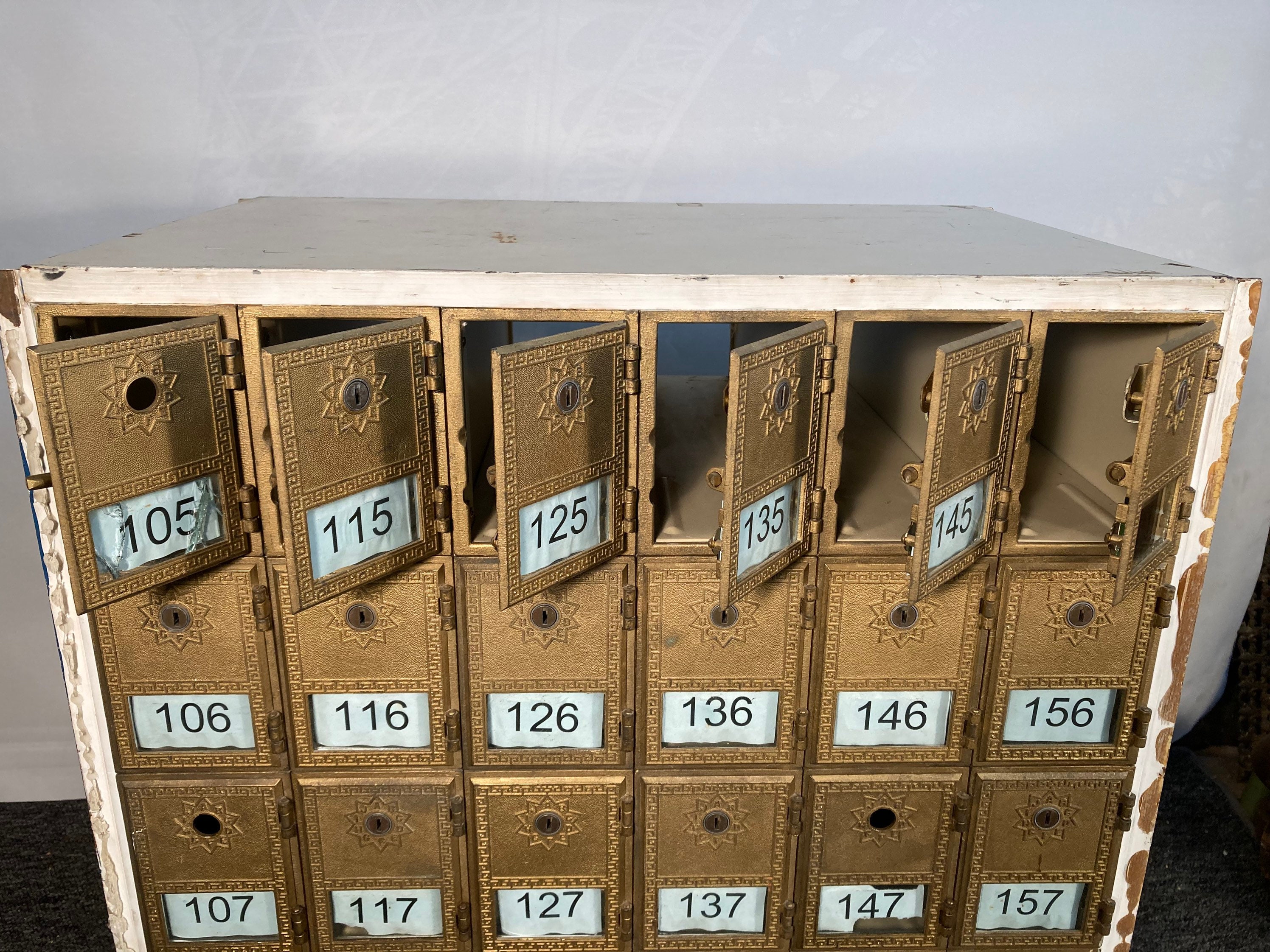History and Evolution of Antique Mail Sorter Cabinets

Antique mail sorter cabinets represent a fascinating intersection of history, technology, and design. Their evolution reflects the changing needs of mail handling and the development of postal systems over time. These cabinets are not merely functional pieces but also serve as tangible reminders of the past, showcasing the ingenuity and craftsmanship of bygone eras.
Early Mail Sorting Practices and the Emergence of Dedicated Cabinets
Before the advent of dedicated mail sorter cabinets, mail sorting was a much more manual and labor-intensive process. In the early days of postal systems, mail was often sorted by hand, with clerks using trays or baskets to separate letters and parcels by destination. This method was inefficient, prone to errors, and limited in its capacity to handle increasing volumes of mail.
The need for a more organized and efficient mail sorting system became increasingly apparent as postal services expanded and mail volume grew. This led to the development of specialized cabinets designed specifically for mail sorting. These cabinets offered a more systematic and organized approach to mail handling, allowing clerks to sort mail quickly and accurately.
The Evolution of Mail Sorter Cabinet Design and Functionality
Antique mail sorter cabinets underwent significant evolution in design and functionality over time, driven by technological advancements and changing postal practices. Early cabinets were often simple in design, consisting of a series of drawers or shelves for storing and sorting mail. However, as mail volumes increased, more sophisticated cabinets emerged, incorporating features such as:
- Multiple compartments: To accommodate different mail classes and destinations, early cabinets featured multiple compartments, each designated for a specific postal route or region. This allowed clerks to quickly and efficiently sort mail based on its destination.
- Adjustable shelves and dividers: As mail volumes and sorting needs changed, cabinets were designed with adjustable shelves and dividers to allow for flexible configuration. This enabled clerks to adapt the cabinet layout to accommodate different mail sizes and volumes.
- Integrated mail chutes: Later cabinets incorporated mail chutes, which allowed clerks to directly deposit sorted mail into the appropriate compartment without having to manually move it. This streamlined the sorting process and further improved efficiency.
- Locking mechanisms: Security was also a major consideration, and many antique mail sorter cabinets featured locking mechanisms to protect mail from theft or unauthorized access. This ensured the integrity and confidentiality of mail in transit.
Comparing and Contrasting Features of Antique Mail Sorter Cabinets from Different Eras
Antique mail sorter cabinets from different eras exhibit distinct features that reflect the technological advancements and changing postal practices of their time. For example:
- Early 19th Century: Cabinets from this era were often made of wood and featured simple designs with multiple drawers or shelves. They were typically smaller in size and lacked advanced features such as mail chutes or locking mechanisms. An example is the “Mail Sorting Cabinet” from the 1820s, which was designed for small post offices and featured a series of wooden drawers for sorting mail by destination.
- Late 19th Century: As postal services expanded and mail volumes increased, cabinets became larger and more complex. They incorporated features such as adjustable shelves, dividers, and integrated mail chutes. These cabinets were often made of metal or a combination of wood and metal, reflecting the growing use of industrial materials. An example is the “Rotary Mail Sorter” from the 1880s, which featured a rotating drum with multiple compartments for sorting mail based on destination.
- Early 20th Century: Cabinets from this era continued to evolve, incorporating even more advanced features such as automatic sorting mechanisms and integrated mail weighing scales. These cabinets were often made of metal and featured streamlined designs that emphasized efficiency and functionality. An example is the “Automatic Mail Sorter” from the 1920s, which used a series of conveyor belts and sorting devices to automatically route mail to its designated compartment.
Types and Styles of Antique Mail Sorter Cabinets

Antique mail sorter cabinets come in a variety of styles and types, reflecting the evolution of mail handling practices and the changing architectural tastes of the time. These cabinets served both practical and aesthetic purposes, and their design often reflected the intended use and the era in which they were made.
Categorization Based on Intended Use, Antique mail sorter cabinet
The primary function of a mail sorter cabinet was to organize and sort mail. However, these cabinets were also used in various settings, influencing their design and features.
- Residential Mail Sorter Cabinets: These cabinets were typically smaller and designed for personal use in homes. They often featured decorative elements and were made of materials like wood, metal, or a combination of both.
- Commercial Mail Sorter Cabinets: These cabinets were larger and more robust, designed for use in businesses and offices. They were often made of metal and featured multiple compartments for sorting mail by destination or type.
- Postal Mail Sorter Cabinets: These cabinets were used in post offices and were designed for high-volume mail sorting. They were typically made of heavy-duty metal and featured specialized compartments and mechanisms for efficient sorting.
Architectural Styles that Influenced Mail Sorter Cabinet Design
The design of antique mail sorter cabinets was influenced by various architectural styles popular during their production.
- Victorian Era (1837-1901): Mail sorter cabinets from this era often featured ornate details, intricate carvings, and dark wood finishes. The Victorian style emphasized craftsmanship and a sense of grandeur.
- Art Nouveau (1890-1910): This style brought a more organic and flowing design to mail sorter cabinets. It featured curved lines, floral motifs, and a focus on natural forms.
- Art Deco (1920s-1930s): Mail sorter cabinets from this era were characterized by geometric shapes, bold colors, and a sense of luxury. They often featured metallic accents and streamlined designs.
- Mid-Century Modern (1930s-1960s): This style favored clean lines, simple forms, and functionality. Mail sorter cabinets from this era often featured metal construction and minimalist designs.
Notable Antique Mail Sorter Cabinets
- The “Tiffany” Mail Sorter Cabinet: This cabinet, made in the early 20th century, features intricate stained glass panels in the Art Nouveau style. It was designed for a wealthy individual and exemplifies the decorative nature of mail sorter cabinets during that era.
- The “Grand Central Station” Mail Sorter Cabinet: This massive cabinet, located in the Grand Central Terminal in New York City, is a prime example of a postal mail sorter cabinet. It was built in the early 1900s and features numerous compartments for sorting mail by destination.
- The “Mid-Century Modern” Mail Sorter Cabinet: This cabinet, designed in the 1950s, features a minimalist design with clean lines and a focus on functionality. It was intended for use in offices and reflects the aesthetic of the mid-century modern era.
Materials and Construction Techniques

Antique mail sorter cabinets are a testament to the craftsmanship and ingenuity of their era. Their construction, using a variety of materials and techniques, played a crucial role in their longevity and aesthetic appeal.
Wood
Wood was the primary material used in the construction of antique mail sorter cabinets. Oak, mahogany, and cherry were favored for their durability, strength, and attractive grain patterns. These woods were often chosen for their resistance to warping and cracking, ensuring the cabinet’s structural integrity over time.
- Oak, known for its hardness and durability, was often used for the frame and drawer fronts. Its natural resistance to wear and tear made it ideal for handling the daily use of a mail sorter cabinet.
- Mahogany, prized for its rich color and beautiful grain, was often used for cabinet doors and drawer interiors. Its luxurious appearance added a touch of elegance to the overall design.
- Cherry, known for its warm reddish-brown tones, was used for both structural and decorative elements. Its ability to age gracefully, developing a rich patina over time, contributed to the cabinet’s timeless appeal.
Metal
Metal was often incorporated into the construction of antique mail sorter cabinets, primarily for functional purposes.
- Brass, with its durability and resistance to corrosion, was commonly used for drawer pulls, hinges, and other hardware. Its warm golden hue complemented the wood finishes, adding a touch of sophistication.
- Iron, known for its strength and durability, was used for the cabinet’s framework and support structures. Its sturdy construction ensured the cabinet’s stability and longevity.
- Steel, a more modern material, was sometimes incorporated into later models for its strength and versatility. It was often used for the drawer slides and other internal components.
Glass
Glass was occasionally incorporated into antique mail sorter cabinets, primarily for decorative purposes.
- Glass panels were sometimes used in cabinet doors, allowing for a glimpse of the contents within. This added a touch of elegance and sophistication to the design.
- Glass knobs were sometimes used on drawers, adding a decorative element and a tactile experience.
Construction Techniques
The construction of antique mail sorter cabinets involved a combination of traditional woodworking techniques and innovative design elements.
- Mortise and Tenon Joints: This traditional woodworking technique, where a tenon (projection) is cut on one piece of wood and fits into a mortise (hole) in another, provided strong and durable joints for the cabinet’s frame. These joints, known for their strength and longevity, ensured the cabinet’s structural integrity over time.
- Dovetail Joints: These interlocking joints, often used for drawer construction, provided exceptional strength and stability. The dovetail’s interlocking design prevented the drawer from pulling out of the cabinet, ensuring its longevity and functionality.
- Hand-Cut Details: Many antique mail sorter cabinets feature hand-cut details, such as decorative moldings, carvings, and inlays. These intricate details were often created by skilled craftsmen, adding a unique touch of artistry to the cabinet’s design.
Impact of Materials and Construction on Longevity and Aesthetic Appeal
The materials and construction techniques used in antique mail sorter cabinets played a crucial role in their longevity and aesthetic appeal.
- Durability: The use of durable woods like oak, mahogany, and cherry, along with strong metal components and traditional joinery techniques, ensured the cabinets’ resilience to wear and tear. This inherent durability contributed to their longevity, allowing them to withstand the test of time and remain functional for generations.
- Aesthetic Appeal: The craftsmanship and attention to detail evident in antique mail sorter cabinets contribute significantly to their aesthetic appeal. The rich wood finishes, intricate carvings, and elegant hardware combine to create visually stunning pieces that enhance any space. These handcrafted elements, often imbued with the personal touch of the maker, lend a unique charm and character to each cabinet, making them highly collectible and treasured items.
The antique mail sorter cabinet, a relic of a bygone era, whispers tales of letters and parcels, each compartment a portal to a different time. Imagine its aged wood, its patina of time, holding secrets within its depths. And yet, even in its antiquity, it yearns for a touch of modern elegance.
Perhaps a touch of innovation could be added with frameless glass cabinet door hinges , allowing its contents to be glimpsed with a contemporary flair. The antique mail sorter cabinet, a testament to the past, embracing the future.
The antique mail sorter cabinet, a relic of a bygone era, whispers tales of letters delivered and lives connected. Its intricate compartments, once teeming with missives, now hold the echoes of a time when communication was a tangible act. Perhaps a modern equivalent, a baxton studio shoe cabinet , could offer a similar sense of order and organization in our chaotic lives.
Just as the mail sorter once sorted the day’s correspondence, the shoe cabinet brings structure to our footwear, each pair finding its designated place, ready for the next adventure.
